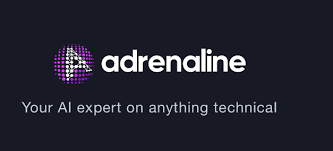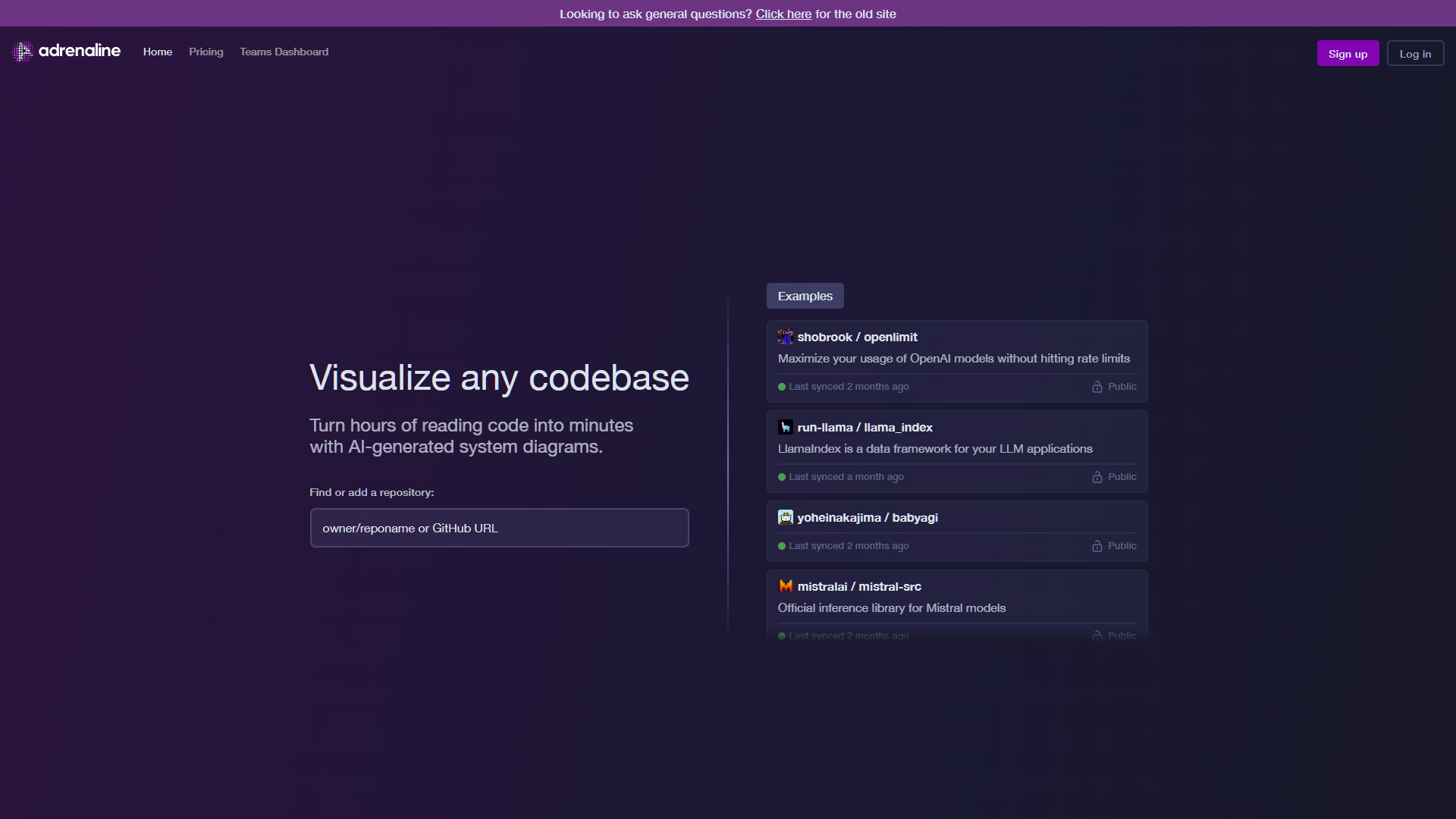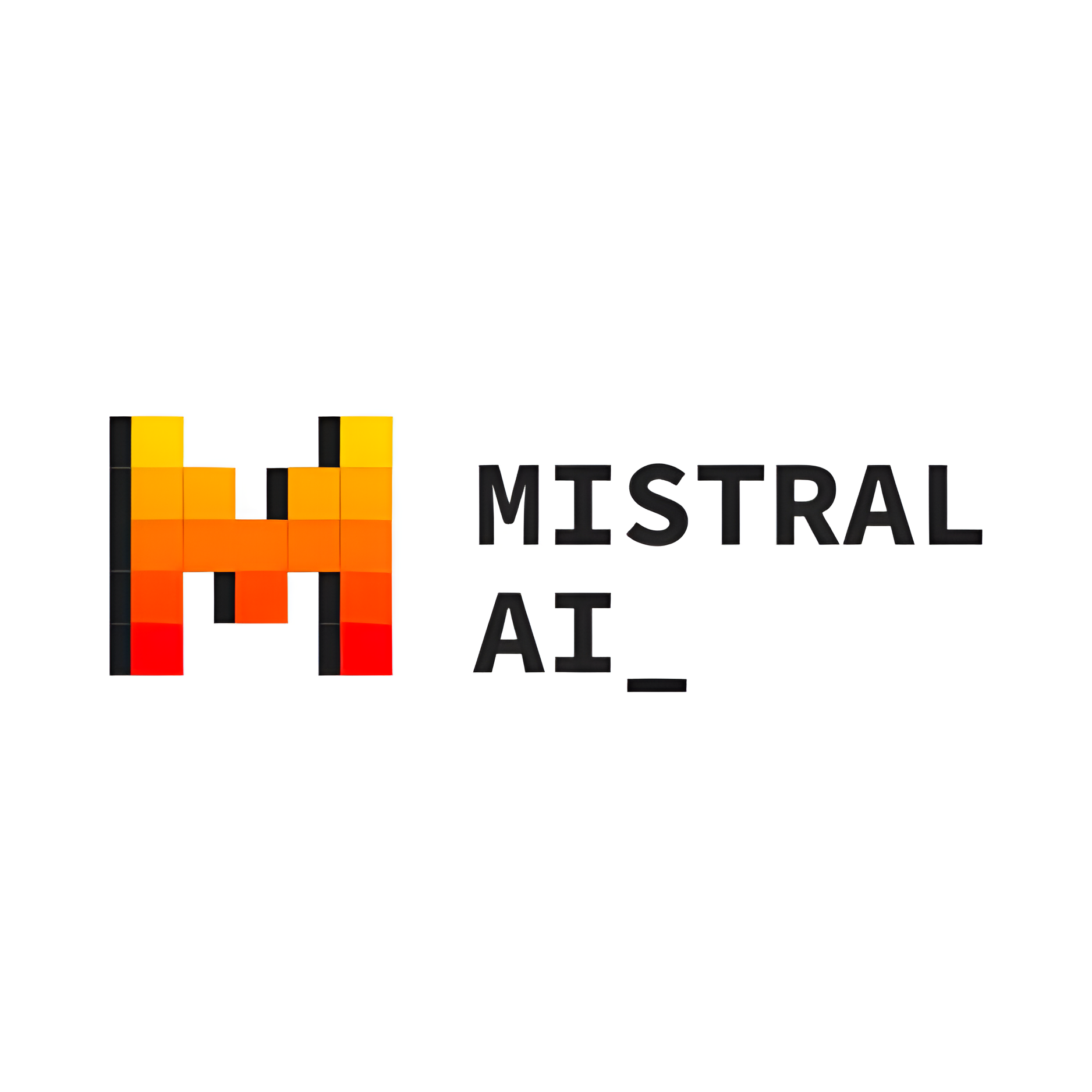Overview
Adrenaline is an innovative AI-powered tool designed to transform the way engineering teams understand and interact with complex codebases. By automatically generating system diagrams—from UML to sequence diagrams and flowcharts—Adrenaline provides a comprehensive visual overview of any codebase architecture, making it easier to grasp intricate systems quickly. This tool allows users to visually navigate through diagrams, delve into detailed nodes, and access in-depth articles for enhanced understanding.
Key to Adrenaline's functionality is its codebase understanding agent, which offers explanations and insights, helping users to efficiently navigate through technical complexities. The platform supports integration with various repositories, including OpenAI models and data frameworks, ensuring that users can maximize their experience without concerns about rate limits.
Adrenaline also features a user-friendly FAQ section on its website, addressing common queries related to repository additions, team usage options, and security measures for private repositories. For those looking to dive deeper, extensive documentation is available on GitHub, alongside additional resources tailored for individual and team use.
Ideal for engineering teams seeking to streamline their technical knowledge management, Adrenaline combines living docs, interactive diagrams, and AI insights to foster a more intuitive and productive engineering environment. For further details, users can explore the Adrenaline website or contact the founders directly through email or Twitter.
Key features
- Interactive system diagrams: Automatically generates various diagrams like UML, sequence diagrams, and flowcharts to visualize and understand codebase structures efficiently.
- Codebase exploration: Enables users to click on diagram nodes for deeper insights with detailed diagrams and related documentation, enhancing code comprehension.
- AI understanding agent: Provides on-demand explanations and answers about the codebase, helping users quickly resolve queries and improve understanding.
- Integration with repositories: Allows users to add and manage repositories from diverse sources including OpenAI models and data frameworks without facing rate limits.
- Team collaboration options: Offers features tailored for team use, facilitating shared access and collaborative modifications to diagrams and codebase interpretations.
- Security for private repos: Ensures the security and privacy of private repositories with robust measures, allowing safe integration and usage within the tool.
 Pros
Pros
- Real-time updates: Automatically refreshes diagrams and data as changes are made to the codebase, ensuring users always have the most current information.
- Customizable views: Users can personalize how information is displayed, focusing on the aspects most relevant to their needs, enhancing usability and efficiency.
- Scalability support: Efficiently handles large codebases and complex projects, making it suitable for both small teams and large enterprises.
- Historical data tracking: Tracks changes over time, allowing users to view historical versions and understand the evolution of the codebase.
- Multi-platform compatibility: Works seamlessly across various operating systems and devices, ensuring accessibility for all team members regardless of their preferred platform.
 Cons
Cons
- Learning curve: The tool's comprehensive features, including AI understanding and interactive diagrams, require significant time and effort to master effectively.
- System performance dependency: The tool's performance heavily relies on the user's hardware capabilities, potentially limiting functionality on lower-end systems.
- Overwhelming information: The detailed diagrams and extensive documentation can overwhelm new users, complicating the initial learning process.
- Customization limitations: While the tool offers various diagram types and integration options, customization options for visual and functional aspects may be limited.
- Dependency on internet connectivity: Full functionality of the tool, including repository integration and AI features, requires a stable internet connection.

















